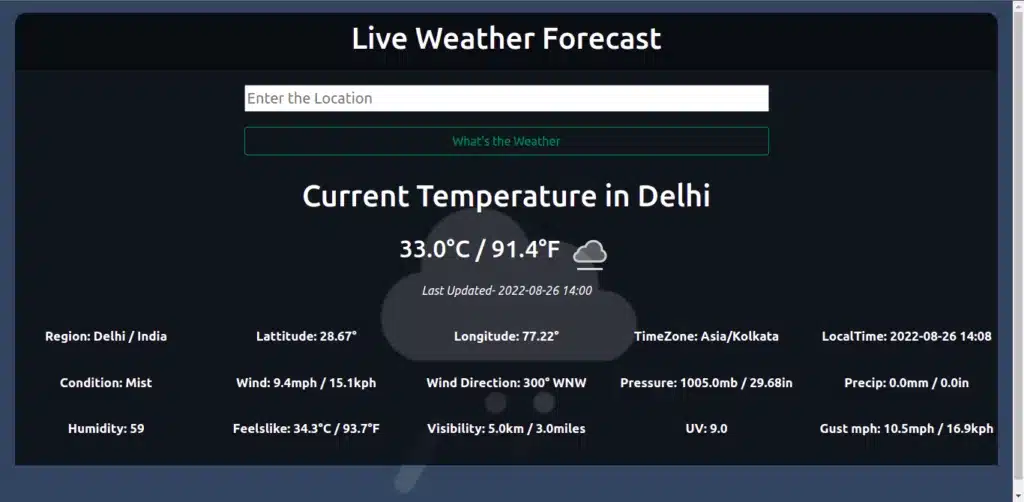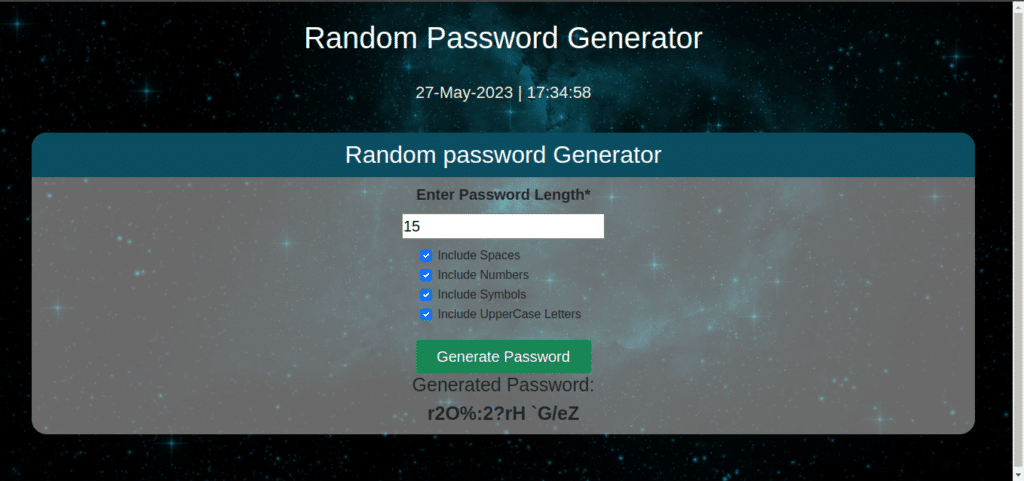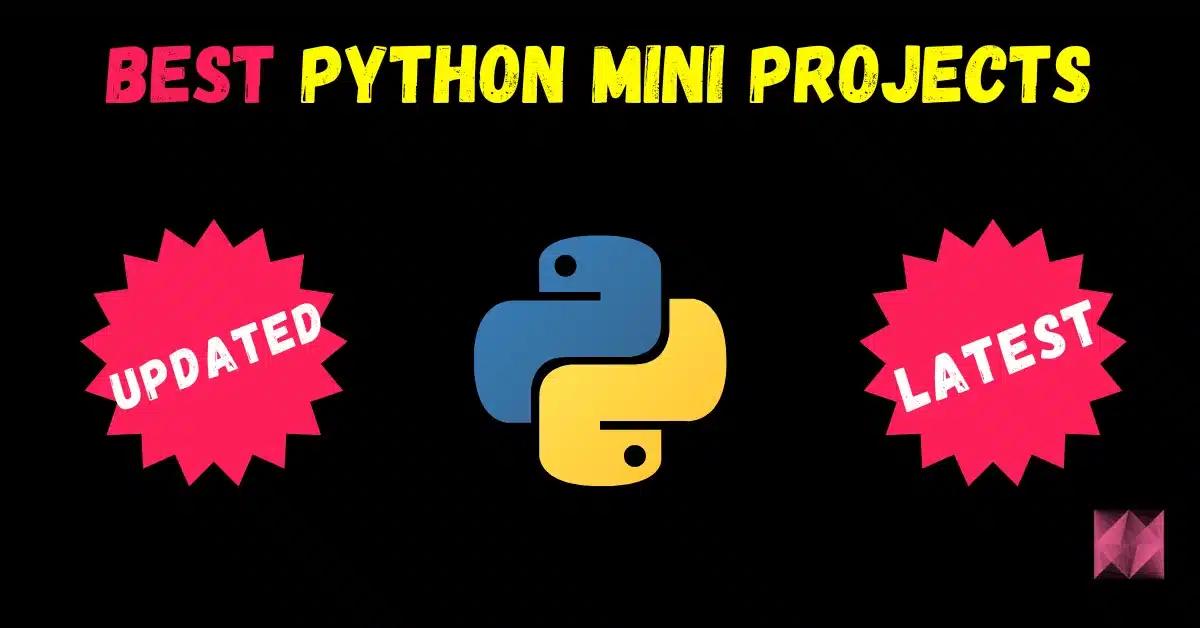Hey, guys in this blog we will see some of the Best Python mini projects that anyone can implement to make their Python game even stronger.
Python is widely known for its simplicity and readability, making it an excellent choice for beginners and experienced developers alike. By working on mini projects, you can apply your knowledge of Python and develop real-world applications that showcase your skills.
This is going to be a very interesting blog, so without any further due, let’s do it…
1. Weather App
Description
A weather app is a popular choice for a Python mini project. It involves retrieving real-time weather data for a specified location and displaying it to the user.
Sneak Peek at our Live Weather Forecast Flask App

Features
- Fetches weather data from a weather API.
- Provides information such as temperature, humidity, wind speed, and weather conditions.
- Supports multiple locations for checking the weather.
Implementation
To create a weather app, you can use Python libraries such as requests for making API calls and json for parsing the response. A graphical user interface (GUI) can be developed using frameworks like Tkinter or PyQt.
Working of our App
2. To-Do List
Description
A to-do list is a practical project that helps users organize their tasks and manage their time effectively.
Features
- Allows users to create and manage multiple to-do lists.
- Supports adding, editing, and deleting tasks.
- Provides options for setting due dates and priorities for tasks.
- Offers task filtering and sorting options.
Implementation
To implement a to-do list, you can use Python’s built-in data structures like lists or dictionaries. A GUI can be created using frameworks like Tkinter or PyQt.
3. URL Shortener
Description
A URL shortener is a useful project that takes long URLs and generates shorter ones, making them easier to share and remember.
Sneak Peek at our URL Shortener

Features
- Converts long URLs into short and unique URLs.
- Redirects users to the original long URL when the short URL is accessed.
- Provides analytics for tracking the number of clicks on shortened URLs.
Implementation
To implement a URL shortener, you can utilize Python frameworks like Flask or Django. The short URLs can be mapped to their corresponding long URLs using a database.
Our Final Output
4. Random Password Generator
Description
A random password generator is a handy tool that generates strong and secure passwords for users.
Features
- Generates random passwords based on user-defined criteria.
- Allows customization of the password length and character sets.
- Provides options for including uppercase letters, lowercase letters, numbers, and special characters.
Implementation
The password generator can be implemented using Python’s random module. By combining different character sets and using random selection, you can generate secure passwords.
Sneak Peek at our Random Password Generator Flask App

5. Text-Based Game
Description
A text-based game is an exciting project that allows users to play a game through a command-line interface.
Features
- Presents users with a story-based scenario and choices.
- Tracks user progress and displays outcomes based on their decisions.
- Implements random events to add unpredictability and replayability.
Implementation
Python’s conditional statements and loops can be used to create different paths and outcomes in the game. By utilizing functions and loops, you can provide an engaging and interactive experience to the user.
6. Image Gallery
Description
An image gallery project allows users to organize and view their image collections.
Features
- Provides a user-friendly interface for browsing images.
- Supports image upload, deletion, and organization into albums.
- Includes basic image editing features like cropping, resizing, and applying filters.
Implementation
Python libraries like Pillow or OpenCV can be used to handle image operations, while GUI frameworks like Tkinter or PyQt can be used to create the graphical interface.
7. Web Scraper
Description
A web scraper automates the process of extracting data from websites.
Features
- Fetches and extracts specific data from web pages.
- Supports scraping multiple pages or websites.
- Saves the extracted data in a structured format (e.g., CSV, JSON, or a database).
Implementation
Python libraries such as BeautifulSoup and Scrapy can be used for web scraping. These libraries allow you to navigate HTML, extract data, and store it for further analysis.
8. Currency Converter
Description
A currency converter project allows users to convert between different currencies.
Features
- Retrieves real-time exchange rates from a reliable API.
- Supports conversion between multiple currencies.
- Provides accurate results with minimal latency.
Implementation
Python libraries like requests and json can be used to fetch currency exchange rates from APIs. By utilizing these rates and performing mathematical calculations, you can implement the currency conversion functionality.
9. File Organizer
Description
A file organizer project helps users organize their files by automatically sorting them into appropriate directories based on file types or extensions.
Features
- Scans a specified directory for unorganized files.
- Sorts files into designated folders based on file types.
- Handles duplicate files and offers customization options.
Implementation
Python’s os module can be utilized to traverse directories, identify file types, and move files to designated folders based on predefined rules.
10. Quiz Application
Description
A quiz application presents users with a series of questions and evaluates their answers.
Features
- Displays questions with multiple-choice options.
- Tracks and calculates the user’s score based on their answers.
- Provides feedback and displays the correct answers.
Implementation
Python allows you to store questions and answers in data structures like lists or dictionaries. By using loops and conditional statements, you can present the questions, evaluate the answers, and calculate the score.
11. Calculator
Description:
A calculator project involves building a simple calculator with basic arithmetic operations. It allows users to perform calculations quickly and efficiently.
Features:
- Supports addition, subtraction, multiplication, and division operations.
- Handles complex calculations and parentheses.
- Provides a user-friendly interface for input and output.
Implementation:
Python offers built-in mathematical operators and functions that can be used to implement the calculator’s functionality. You can create a graphical interface using libraries like Tkinter or PyQt.
12. Email Sender
Description:
An email sender project enables users to send emails programmatically using Python. It allows users to compose emails, specify recipients, and send attachments.
Features:
- Sends emails using SMTP (Simple Mail Transfer Protocol).
- Supports email composition with subject, body, and attachments.
- Provides options for sending emails to multiple recipients.
Implementation:
Python’s smtplib library can be used to send emails through an SMTP server. By utilizing this library and providing the necessary email details, you can implement the email sender functionality.
13. Contact Book
Description:
A contact book project helps users manage their contacts by storing contact details and providing search and retrieval functionality.
Features:
- Allows users to add, edit, and delete contact information.
- Provides search functionality based on names, phone numbers, or other criteria.
- Stores contacts in a structured format for easy retrieval.
Implementation:
You can implement a contact book using Python’s built-in data structures like dictionaries or lists. By storing contacts in a suitable format, you can enable efficient search and retrieval operations.
14. Dice Simulator
Description:
A dice simulator is a fun project that allows users to simulate rolling dice. It can be used in games or for generating random numbers.
Features:
- Simulates the rolling of one or more dice.
- Displays the outcome and total value of the dice roll.
- Allows customization of the number of dice and the type of dice (e.g., 6-sided, 10-sided).
Implementation:
Python’s random module can be utilized to simulate dice rolls. By generating random numbers within the desired range, you can simulate the outcome of rolling dice.
15. Word Counter
Description:
A word counter project helps users analyze the word count and frequency in a given text or document. It provides useful statistics and insights about the text.
Features:
- Counts the total number of words in a text.
- Analyzes the frequency of each word and provides a word frequency distribution.
- Excludes common stop words and provides options for customization.
Implementation:
Python allows you to read and process text files easily. By utilizing string manipulation techniques and data structures like dictionaries or sets, you can implement a word counter that provides useful statistics about the text.
Conclusion
In this article, we have explored some of the best Python mini projects that can help you enhance your programming skills and have fun while learning. These projects cover a wide range of applications and provide hands-on experience in various areas of Python programming. By working on these projects, you can apply your knowledge, explore different libraries and frameworks, and develop practical applications that showcase your skills. So, pick a project that interests you the most, dive into coding, and enjoy the process of building something meaningful with Python!
So these were some of the best and latest Python Mini Projects. Hope you liked this article…
FAQs
1. Can I complete these projects as a beginner in Python?
Yes, these projects are suitable for beginners in Python. They provide opportunities to learn and apply essential programming concepts and libraries.
2. Are these projects suitable for experienced Python developers?
Yes, experienced Python developers can also benefit from these projects as they provide opportunities to further refine their skills and explore new libraries or frameworks.
3. Can I customize these projects and add additional features?
Absolutely! These projects serve as a starting point, and you can customize them according to your preferences. Feel free to add new features and expand their functionality.
4. Are there any resources or tutorials available for these projects?
Yes, there are many online resources, tutorials, and documentation available for each project. You can refer to official documentation, online tutorials, or community forums to find guidance and support.
5. How can I showcase these projects in my portfolio?
You can showcase these projects in your portfolio by providing a brief description, code snippets, and a link to the GitHub repository or a live demo. Highlight the features and functionalities you implemented.
Read my last article – Create your first web app using Flask
Check out my other machine learning projects, deep learning projects, computer vision projects, NLP projects, Flask projects at machinelearningprojects.net
